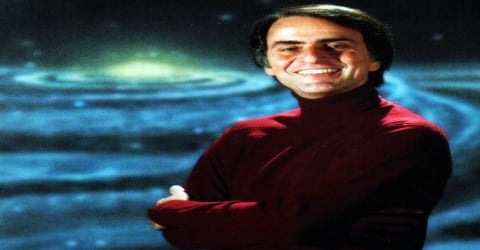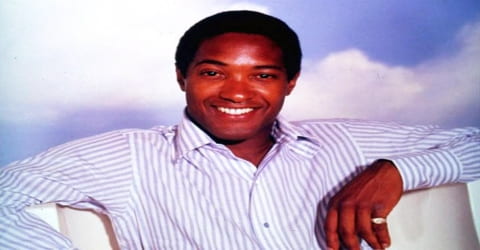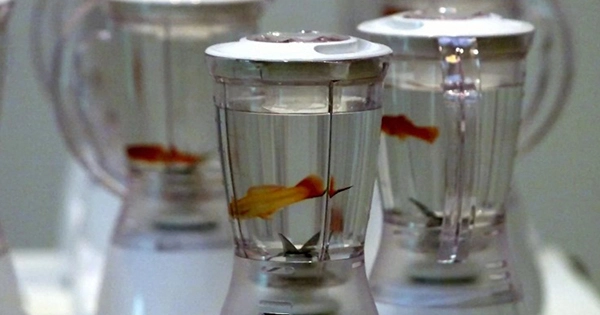Biography of Carl Sagan
Carl Sagan – American astronomer, cosmologist, astrophysicist, astrobiologist, author, science popularizer, and science communicator in astronomy and other natural sciences.
Name: Carl Edward Sagan
Date of Birth: November 9, 1934
Place of Birth: Brooklyn, New York, United States
Date of Death: December 20, 1996 (aged 62)
Place of Death: Seattle, Washington, United States
Occupation: Astronomer, Cosmologist, Astrophysicist, Astrobiologist, Author
Father: Samuel Sagan
Mother: Rachel Molly Gruber
Spouse/Ex: Lynn Margulis (m. 1957-1964), Linda Salzman Sagan (m. 1968-1981), Ann Druyan (m. 1981-1996)
Children: Dorion Sagan, Jeremy Sagan, Nick Sagan, Samuel Sagan, Sasha Sagan
Early Life

An American astronomer and science writer. A popular and influential figure in the United States, he was controversial in scientific, political, and religious circles for his views on extraterrestrial intelligence, nuclear weapons, and religion, Carl Sagan was born on November 9, 1934, in Brooklyn, New York, U.S. to a garment worker, Samuel Sagan. His mother was Rachel Molly Gruber, a homemaker. Carl Sagan made crucial contributions in popularizing astronomy to the public. He wrote the article “life” for the 1970 printing of the 14th edition of the Encyclopædia Britannica (1929-73). He authored over 600 scientific papers and wrote several books about astronomy and natural sciences. He also gained worldwide fame for narrating and writing the popular 1980 television series “Cosmos: A Personal Voyage”.
Carl Sagan developed an interest in astronomy quite early at the age of five he first learned that the sun was actually a star and all stars are as big as the sun. Much later, while studying at Chicago University, he came to know that astronomers make good money. All along, he had been pursuing astronomy as a hobby; now he was glad to know that he could take it up as his profession. Thereafter, he earned his Ph.D. in astrophysics and after a brief period of fellowship at the University of California, he took up a teaching position, first at Harvard University and then at Cornell. Concurrently, he was also appointed a visiting scientist at NASA. Although he was a renowned scientist, working on planetary atmospheres, in astrobiology, and on the origin of life, he is best known for his work on extraterrestrial life. He also worked tirelessly to popularize science and authored many papers and books and regularly took part in television programs. All these made him the most known scientist in 1970s and 1980s.
Childhood, Family and Educational Life
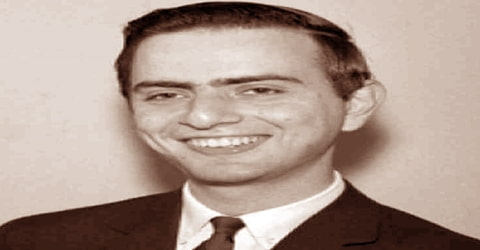
Carl Sagan, in full Carl Edward Sagan, was born on November 9, 1934, in Brooklyn, New York, U.S. His father, Samuel Sagan, was an immigrant garment worker from Kamianets-Podilskyi, then in the Russian Empire, in today’s Ukraine. His mother, Rachel Molly Gruber, was a housewife from New York. Carl was named in honor of Rachel’s biological mother, Chaiya Clara, in Sagan’s words, “the mother she never knew”. Carl was the eldest of his parents’ two children; he had a sister called Carol. They lived in a modest house in Bensonhurst and had little money. Yet, their parents took care to nurture in them the interest in different subjects, especially science.
In 1939, when Carl Sagan was not yet five, he was taken to New York’s World Fair by his parents. Although he was still a small child he was so impressed by different exhibits, especially the ‘Futurama’, that he was able to recall them later in life. Sagan began his education at a local elementary school. He discovered that the sun was a star and got amazed by the fact. Slowly, he began to develop an interest in planets and stars. In time, he enrolled at the David A. Boody Junior High School, where he developed an interest in chemistry. However, astronomy remained his favorite hobby.
In 1947 he discovered Astounding Science Fiction magazine, which introduced him to more hard science fiction speculations than those in Burroughs’s novels. That same year inaugurated the “flying saucer” mass hysteria with the young Carl suspecting that the “discs” might be alien spaceships. In1948, the family shifted to Rahway, New Jersey, and Carl was enrolled at Rahway High School and graduated from there in 1951.
During his time as an honors program undergraduate, Sagan worked in the laboratory of the geneticist H. J. Muller and wrote a thesis on the origins of life with physical chemist Harold Urey. Sagan joined the Ryerson Astronomical Society, received a B.A. degree in laughingly self-proclaimed “nothing” with general and special honors in 1954, and a B.S. degree in physics in 1955. He went on to earn an M.S. degree in physics in 1956, before earning a Ph.D. degree in 1960 with his thesis Physical Studies of Planets submitted to the Department of Astronomy and Astrophysics.
Thereafter, Carl Sagan started his graduation work with Gerard Kuiper. In 1958, while still pursuing his graduation work, Carl had the good fortune to work with Kuiper on the classified military Project A119. In 1960, he earned his Ph.D. in astrophysics. His dissertation was titled ‘Physical Studies of Planets’.
Personal Life
Carl Sagan was married three times. In 1957, he married biologist, Lynn Margulis. She was an evolutionary theorist, science author, and educator. The couple had two children, Jeremy, and Dorion Sagan. The marriage ended in divorce in 1965.
Sagan next married an artist and writer Linda Salzman on April 6, 1968. She created the artwork for the Pioneer plaque, co-produced the Voyager Golden Record and co-authored ‘Murmurs of the Earth’. The couple had a son named, Nick Sagan. This marriage also ended in divorce in 1981.
In 1981, Sagan married author Ann Druyan and they later had two children, Alexandra, and Samuel Sagan. Carl Sagan and Druyan remained married until his death in 1996. He lived in an Egyptian revival house in Ithaca perched on the edge of a cliff that had formerly been the headquarters of a Cornell secret society.
Carl Sagan wrote frequently about religion and the relationship between religion and science, expressing his skepticism about the conventional conceptualization of God as a sapient being. He also commented on Christianity and the Jefferson Bible, stating “My long-time view about Christianity is that it represents an amalgam of two seemingly immiscible parts, the religion of Jesus and the religion of Paul. Thomas Jefferson attempted to excise the Pauline parts of the New Testament. There wasn’t much left when he was done, but it was an inspiring document.”
Career and Works

From 1960 to 1962 Carl Sagan was a fellow in astronomy at the University of California, Berkeley, and from 1962 to 1968 he worked at Harvard University and the Smithsonian Astrophysical Observatory. His early work focused on the physical conditions of the planets, especially the atmospheres of Venus and Jupiter. During that time he became interested in the possibility of life beyond Earth and the search for extraterrestrial intelligence (SETI), a controversial research field he did much to advance. For example, building on earlier work by American chemists Stanley Miller and Harold Urey, he demonstrated that amino acids and nucleic acids the building blocks of life could be produced by exposing a mixture of simple chemicals to ultraviolet radiation. Some scientists criticized Sagan’s work, arguing that it was unreasonable to use resources for SETI, a fantasy project that was almost certainly doomed to failure.
Concurrently, he was a visiting scientist to NASA’s Jet Propulsion Laboratory. In the latter capacity, he contributed significantly to the first Mariner missions to Venus, working both on its design and management. Working with Joshua Lederberg, Sagan also helped to expand the role of biology in NASA. Sagan lectured, performed research, and advised graduate students at the institution from 1963 until 1968, as well as working at the Smithsonian Astrophysical Observatory, also located in Cambridge, Massachusetts.
During this period, Sagan mainly worked on the physical conditions of different planets, especially Mars and Venus. He established that the radio emissions from Venus were the result of very hot surface temperature caused by the sun’s heat, trapped between the surface of the planet and its carbon dioxide cloud-cover. His theory refuted the earlier notion that the atmosphere of Venus was more like the earth’s atmosphere. Although many scientists were skeptic, it was confirmed first by NASA’s Mariner 2 and later by the Soviet scientists. Sagan had also studied various data available on Mars. From that, Sagan concluded that the bright regions observed on the surface of Mars were actually lowlands filled with wind-blown sand while the dark areas were elevated ridges or highlands. During this period, he also became interested in life beyond the earth and experimentally demonstrated that amino acids could be produced from basic chemicals through radiation. From it, he concluded that the existence of extraterrestrial beings was not at all farfetched.
Carl Sagan was a lecturer and researcher at Harvard University until 1968. He then joined Cornell University in Ithaca, where he became a full Professor in 1971, and later, the director of the Laboratory for Planetary Studies. He helped select the Mars landing sites for the Viking probes, and he co-designed the messages from Earth that were attached to the Pioneer and Voyager probes that were launched out of the solar system. Sagan remained at Cornell until his death from pneumonia, a complication of the bone-marrow disease myelodysplasia, at age 62.
Sagan authored more than 20 books about space and the universe. He won a Pulitzer Prize for his work. His TV series Cosmos still remains one of the most-watched shows in television history. Sagan helped NASA with U.S. space missions to Venus, Mars, and Jupiter. Particularly, his discovery of the high surface temperatures of the planet Venus is highly regarded. He also worked on understanding the atmospheres of Venus and Jupiter and seasonal changes on Mars.
Although Sagan did important research on planetary atmospheres, in astrobiology, and on the origin of life on Earth, he made his reputation primarily as a spokesman for science and a popularizer of astronomy. In the 1970s and ’80s he was probably the best-known scientist in the United States. Both an advocate for and a showman of science, he invested much of his career in improving public understanding of science and defending its rational nature. In 1973 he published, with Jerome Agel, The Cosmic Connection: An Extraterrestrial Perspective, which earned him prominence as a popular science writer. The following year he confronted the American writer Immanuel Velikovsky in a public debate over Velikovsky’s theories of the history of the solar system.
In 1976, Sagan became the David Duncan Professor of Astronomy and Space Sciences, a position he held for the remainder of his life. Concurrently, he also continued his association with NASA and co-designed Voyager Golden Record. Thereafter, Sagan became involved with NASA’s next mission Galileo, initially christened Jupiter Orbiter Probe. Along with that, he continued his research on planetary atmospheres, in astrobiology, and on the origin of life. Sagan was also a prolific writer and had successfully used his pen to popularize astronomy. He had published more than 600 papers and authored/co-authored/edited around twenty books. ‘Jerome Agel, The Cosmic Connection: An Extraterrestrial Perspective’, published in 1973, was first to turn him into a popular science writer.
In 1980 Sagan co-wrote and narrated the award-winning 13-part PBS television series ‘Cosmos: A Personal Voyage’, which became the most widely watched series in the history of American public television. The show has been seen by at least 500 million people across 60 different countries. The book, Cosmos, written by Sagan, was published to accompany the series. Because of his earlier popularity as a science writer from his best-selling books, including ‘The Dragons of Eden: Speculations on the Evolution of Human Intelligence’, which won him a Pulitzer Prize in 1977, he was asked to write and narrate the show. It was targeted to a general audience of viewers, who Sagan felt had lost interest in science, partly due to a stifled educational system. Each of the 13 episodes was created to focus on a particular subject or person, thereby demonstrating the synergy of the universe. They covered a wide range of scientific subjects including the origin of life and a perspective of humans’ place on Earth.
‘Cosmos’ was followed by bestsellers like ’Contact’ (1985), ‘Pale Blue Dot: A Vision of the Human Future in Space’ (1994), etc. His last major work was ‘The Demon-Haunted World: Science as a Candle in the Dark’ (1995). In it, he tried to explain the scientific method to laypersons and encourage skeptical thinking.
Carl Sagan sometimes used his prestige for political purposes, as in his campaign for nuclear disarmament and his opposition to the Strategic Defense Initiative of U.S. Pres. Ronald Reagan. In 1983 he co-wrote the paper that introduced the concept of “nuclear winter,” a catastrophic global cooling that would result from a nuclear war. Sagan was also coauthor of The Cold and the Dark: The World After Nuclear War (1984). A tireless advocate of scientific rationality, he argued strongly against tendencies toward pseudoscience and occultism, most comprehensively in his last major book, The Demon-Haunted World (1996), significantly subtitled Science As a Candle in the Dark. Although he denied that he was an atheist, Sagan expressed skepticism about conventional religion, which he wanted to replace with a scientifically based belief system. Some critics claimed that Sagan’s arguments against traditional religious beliefs were simplistic and revealed his lack of theological insight.
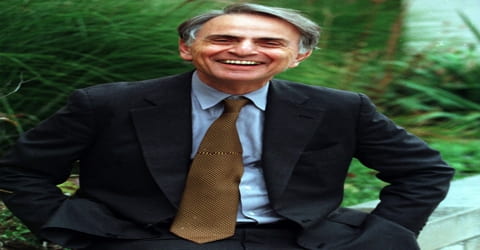
The 1997 film ‘Contact’ has been inspired by Sagan’s book of the same name. Contrary to the popular belief that aliens would be destructive to mankind, Sagan advocated that aliens would be friendly and good-natured. Sagan is known to have been one of the earliest scientists to propose that there might be life on other planets. He encouraged NASA to explore the solar system for signs of life. He received the Public Welfare Medal, the highest award of the National Academy of Sciences, in 1994.
Speaking about his activities in popularizing science, Carl Sagan said that there were at least two reasons for scientists to share the purposes of science and its contemporary state. Simple self-interest was one: much of the funding for science came from the public, and the public, therefore, had the right to know how the money was being spent. If scientists increased public admiration for science, there was a good chance of having more public supporters. The other reason was the excitement of communicating one’s own excitement about science to others. In his last written works, Sagan contended that the possibilities of extraterrestrial space vehicles visiting Earth are vanishingly small.
Awards and Honor
Carl Sagan received numerous awards and honors, including the Pulitzer Prize for nonfiction in 1978 for his book ‘The Dragons of Eden’, the National Aeronautics and Space Administration’s Distinguished Public Service Medal (1977 and 1981), and the Ørsted Medal from the American Association of Physics Teachers in 1990.
In 1994 Sagan was awarded the Public Welfare Medal by the National Academy of Sciences, but he never succeeded in becoming a member of that prestigious academy.
Death and Legacy
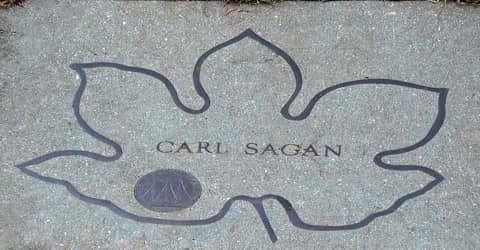
After suffering from myelodysplasia for two years and receiving three bone marrow transplants from his sister, Carol, Carl Sagan died from pneumonia at the age of 62, at the Fred Hutchinson Cancer Research Center in Seattle, Washington, in the early morning of December 20, 1996. Burial took place at Lakeview Cemetery in Ithaca, New York.
Carl Sagan is best remembered for his scientific research on extraterrestrial life. He showed that amino acids and nucleic acids, the two main components of life, could be created by exposing a mixture of certain chemicals to ultraviolet rays and therefore, life can exist outside the earth. He is also known for assembling the first two physical messages sent into space by NASA. The first was Pioneer plaques, set up on Pioneer 10 and 11 and the other was Voyager Golden Records, attached to Voyager 1 and Voyager 2.
Sagan is also widely regarded as a freethinker or skeptic; one of his most famous quotations, in Cosmos, was, “Extraordinary claims require extraordinary evidence” (called the “Sagan Standard” by some). This was based on a nearly identical statement by the fellow founder of the Committee for the Scientific Investigation of Claims of the Paranormal, Marcello Truzzi, “An extraordinary claim requires extraordinary proof.” This idea had been earlier aphorized in Théodore Flournoy’s work From India to the Planet Mars (1899) from a longer quote by Pierre-Simon Laplace (1749-1827), a French mathematician and astronomer, as the Principle of Laplace: “The weight of the evidence should be proportioned to the strangeness of the facts.”
The Pioneer plaques consisted of images of nude man and woman along with several other symbols co-designed by Carl Sagan and Frank Drake. It had the potential to be understood by any extraterrestrial intelligence that might find them one day. Voyager Golden Records is a kind of time capsule, meant for communicating to extraterrestrials the story of the earth and its inhabitants. They comprised of 116 images and a variety of natural sounds as well as a musical selection from different ages and cultures, messages in Mores Code, etc. The contents were selected by a committee chaired by Carl Sagan.
Information Source:
